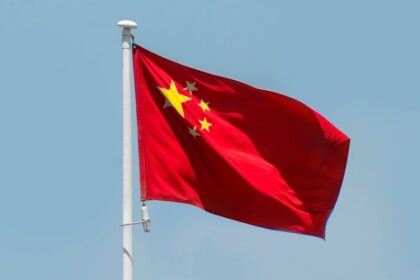Brief History of the Company Dollar Tree, Inc. is an American multi-price-point discount variety store chain. The company was founded in 1986 and has grown significantly over the decades, becoming one of the leading discount retailers in the United States. It operates thousands of stores across the U.S. and Canada, offering a wide range of products from household items to food.
Key Milestones and Growth
- 1986: Founded as Only $1.00 by Macon Brock, Doug Perry, and Ray Compton in Norfolk, Virginia.
- 1993: The company was rebranded to Dollar Tree Stores, Inc.
- 1995: Dollar Tree went public and was listed on the NASDAQ.
- 2006: Celebrated the opening of its 3,000th store.
- 2015: Acquired Family Dollar, significantly expanding its market presence.
Founding and Early Ownership
Founding of Dollar TreeFounders and Initial Establishment
Dollar Tree was founded by Macon Brock, Doug Perry, and Ray Compton. The founders aimed to create a discount store that offered a variety of products at a fixed price point of one dollar. The first store was opened in Norfolk, Virginia, and the business model quickly proved successful.
Early Business Model and Expansion
The early business model focused on providing a wide range of products, all priced at one dollar. This fixed-price model appealed to a broad customer base and helped the company expand rapidly. By offering a consistent pricing strategy, Dollar Tree differentiated itself from other discount retailers.
Initial Ownership StructureOwnership Distribution Among Founders and Early Investors
In the initial stages, ownership of Dollar Tree was primarily held by the founders and a small group of early investors. Macon Brock, Doug Perry, and Ray Compton retained significant ownership stakes, which provided them with control over the company’s strategic direction.
CompassMobileDollarTree
To enhance the employee experience and streamline administrative tasks, Dollar Tree offers the compassmobile.dollartree.com login Portal. This official portal provides employees with easy access to essential resources, such as viewing and updating personal information, accessing payroll and tax documents, managing work schedules, and exploring available benefits. The portal’s user-friendly interface ensures that employees can efficiently manage their work-related tasks and stay informed about company updates.
With secure login credentials and robust data protection measures, the Dollar Tree Compass Employee Portal is a vital tool for fostering effective communication and operational efficiency within the company.
Public Listing and Shareholders
Initial Public Offering (IPO)Year of IPO and Stock Exchange Listing
Dollar Tree went public in 1995, listing its shares on the NASDAQ stock exchange under the ticker symbol DLTR. The IPO allowed the company to raise capital to fund further expansion and operational improvements.
Impact of Going Public on Ownership Structure
Going public introduced a wider range of shareholders, including institutional investors and individual shareholders. This diluted the founders’ ownership stakes but provided the company with the financial resources needed for growth.
Major Shareholders Post-IPOKey Institutional Investors
Post-IPO, Dollar Tree attracted several major institutional investors. Notable among these are investment firms such as Vanguard Group and BlackRock, which hold significant shares in the company. These institutional investors play a crucial role in influencing company policies and strategies.
Prominent Individual Shareholders
Apart from institutional investors, prominent individual shareholders, including company executives and board members, hold shares in Dollar Tree. These insiders have a vested interest in the company’s success and are often involved in key decision-making processes.
Current Ownership Structure
Major Institutional InvestorsList of Top Institutional Shareholders
- Vanguard Group: One of the largest shareholders, holding a significant percentage of Dollar Tree’s shares.
- BlackRock: Another major institutional investor with a substantial stake in the company.
Percentage of Shares Held by These Institutions
These top institutional shareholders collectively hold a significant portion of Dollar Tree’s outstanding shares, often amounting to 20-30% of the total shares.
Executive and Insider OwnershipShares Held by Executives and Board Members
Dollar Tree’s executives and board members also hold shares in the company. This insider ownership aligns their interests with those of shareholders, promoting decisions that enhance shareholder value.
Insider Trading and Shareholding Trends
Insider trading activities, including buying and selling of shares by executives and board members, are regularly reported and monitored. These activities provide insights into insiders’ confidence in the company’s future performance.
Key Acquisitions and Mergers
Significant Acquisitions by Dollar TreeNotable Acquisitions (e.g., Family Dollar)
One of the most significant acquisitions by Dollar Tree was the purchase of Family Dollar in 2015 for approximately $8.5 billion. This acquisition expanded Dollar Tree’s footprint and allowed it to tap into Family Dollar’s customer base.
Impact on Ownership and Company Structure
The acquisition of Family Dollar brought changes to Dollar Tree’s ownership structure, integrating Family Dollar’s stakeholders into the broader shareholder base. It also resulted in operational synergies and expanded product offerings.
Ownership Changes Post-AcquisitionsShifts in Major Shareholders
Post-acquisition, there were shifts in the ownership stakes of major shareholders as they adjusted their holdings to reflect the new company structure. Some investors increased their stakes, while others diversified their portfolios.
Integration of Acquired Company’s Stakeholders
The integration process involved aligning the interests of Family Dollar’s stakeholders with those of Dollar Tree. This included consolidating operations and unifying corporate governance practices.
Governance and Control
Board of DirectorsComposition and Key Members of the Board
Dollar Tree’s board of directors comprises experienced professionals from diverse backgrounds. Key members include the CEO, independent directors, and representatives of major institutional investors.
Role in Company Oversight and Strategic Decisions
The board is responsible for overseeing the company’s management and ensuring that strategic decisions align with shareholder interests. They play a crucial role in setting corporate policies and guiding the company’s long-term strategy.
Corporate Governance PoliciesPolicies Affecting Ownership and Control
Dollar Tree has implemented robust corporate governance policies to ensure transparency and accountability. These policies include guidelines on board composition, executive compensation, and shareholder rights.
Market Position and Influence
Dollar Tree in the Retail IndustryMarket Share and Competitive Positioning
Dollar Tree holds a significant market share in the discount retail industry. Its competitive positioning is strengthened by its fixed-price model and extensive store network.
Influence of Major Shareholders on Company Strategy
Major shareholders, particularly institutional investors, influence Dollar Tree’s strategic direction. Their input helps shape decisions related to expansion, product offerings, and corporate governance.
Financial PerformanceRecent Financial Results and Their Impact on Ownership
Dollar Tree’s financial performance, including revenue growth and profitability, impacts shareholder confidence and stock prices. Positive results attract more investors, while poor performance may lead to changes in ownership.
Stock Performance and Market Capitalization
Dollar Tree’s stock performance reflects its market capitalization and investor sentiment. The company’s ability to deliver consistent financial results plays a crucial role in maintaining a strong market position.








